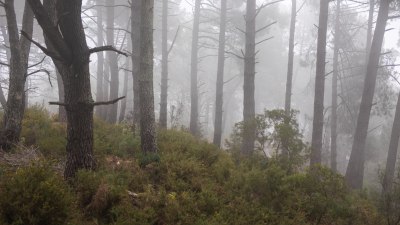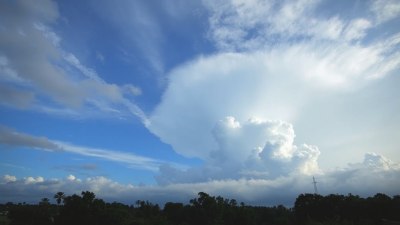Why Capture the Flag Becomes a Stealth Mission in Heavy Fog
Explore the intricate relationship between heavy fog and stealth tactics in Capture the Flag games.

Capture the Flag (CTF) is a classic game played in various settings, from sprawling fields to high-tech military environments. While the game typically emphasizes strategy, teamwork, and vigorous gameplay, the introduction of heavy fog adds a unique layer of complexity and intrigue. This article delves deep into why Capture the Flag transforms into a stealth mission under heavy fog, examining the physical, psychological, and tactical aspects involved.
The Role of Visibility in Capture the Flag
Visibility is a crucial factor in CTF, impacting how players navigate the terrain, spot opponents, and execute strategies. In clear conditions, players can easily identify targets, communicate with teammates, and develop a robust plan for capturing the flag. However, when heavy fog rolls in, visibility can plummet, sometimes reducing it to just a few feet. This significant reduction in visibility demands a shift in gameplay style, often leaning toward more stealth-oriented tactics.
Psychological Impact of Fog
Fog creates an atmosphere of uncertainty and anxiety. Players often feel vulnerable when they cannot see far ahead, which can impact their decision-making skills. This psychological weight leads to a natural inclination towards caution. Players become more aware of their surroundings, listening intently for any unusual sounds that might indicate the presence of adversaries. As players navigate through fog, fear and caution can suppress the aggressive strategies typically employed during CTF, emphasizing stealth, strategy, and stealth maneuvering instead.
Tactical Adjustments in Heavy Fog
In heavy fog, players must adapt their tactics to account for limited visibility. Stealth becomes paramount, as players seek to surprise opponents rather than confront them head-on. Strategies may include low-profile movements, careful positioning, and using the fog as a natural ally to mask one’s approach. Communication becomes vital in these scenarios, as players must rely on their teammates’ observations and experiences to coordinate efforts effectively within the blinding conditions.
Importance of Team Coordination
When heavy fog envelops the CTF playing field, effective team coordination takes on a new level of importance. Teams must work closely together to communicate their locations, strategies, and observations to adapt to the shifting environment. This can lead to more synchronized efforts, as players rely on audible cues rather than visual signals. A well-coordinated team can leverage fog to create deceptive feints, allowing one part of the team to draw attention while another attempts to capture the flag under the cover of the fog.
Utilizing Terrain Features
Terrain plays a critical role in navigating foggy conditions. Players can take advantage of natural features such as trees, rocks, and elevation changes to conceal their movements. Stealth missions in fog highlight the importance of understanding the landscape, leading players to develop intimate knowledge of the terrain, which can provide shelter and paths that bypass opponents. Terrain familiarity allows teams to create ambush points and tactical retreats, shifting the focus from direct confrontation to stealth and strategy.
Timing and Patience
In heavy fog, the element of timing and patience becomes crucial. Rushing into the fog can lead players to make mistakes, revealing their positions to opponents or miscalculating their distances. Players must often wait and observe for the right moment to advance, allowing fog to provide cover for their movements. Stealth missions under these conditions reward players who exercise patience, as they can seize opportunities that arise from the fog, ambush their opponents, or safely retrieve the flag.
Engaging the Senses
Heavy fog often heightens players’ reliance on their other senses, primarily sound. With visual cues diminished, players become acutely aware of their auditory environment. A crunching leaf, a rustling branch, or even the sound of footsteps can provide invaluable information about the movements of adversarial players. Teams can utilize sound to their advantage, employing tactics that include synchronized movements or carefully orchestrated distractions based on sound, making the fog a backdrop for a sensory-driven stealth mission.
Developing Stealth Skills
Foggy conditions challenge players to hone their stealth skills through practice. Players learn how to minimize noise and avoid visual detection, developing strategies specifically tailored to the fog. Exercises might include silent communication with hand signals, controlling breathing to reduce noise, and mastering movement techniques that prioritize stealth. Over time, these skills not only enhance a player’s performance in fog but also develop a broader set of tactical abilities applicable to diverse environments.
Considering Fog as a Game Mechanic
In some contexts, fog can be integrated into Capture the Flag gameplay as a deliberate game mechanic. Game designers can choose to manipulate weather elements to control visibility intentionally, making fog a frequent challenge players face. Such mechanics can create a more dynamic and engaging gameplay experience, continuously forcing players to adjust their tactics and behavior according to changing conditions. By embracing fog as a game element rather than merely a hindrance, players may find innovative strategies that leverage the atmospheric conditions.
Close Quarters Dynamics
In foggy conditions, engagements often devolve into close-quarters confrontations. Players must be ready for abrupt, intense battles when encountering opponents, requiring them to adapt their combat strategies rapidly. This close-combat nature means that stealth becomes even more critical, as players may not have time for elaborate plans or long-range shots. Instead, they need to rely on quick thinking, reflexes, and knowledge of their surroundings to outsmart their opponents.
Analyzing Real-Life Applications
The principles of playing Capture the Flag in heavy fog extend beyond the playground. In military operations, troops often face similar challenges in foggy conditions, leading to the implementation of stealth tactics during reconnaissance missions or engagements. Studying how CTF strategies can parallel military techniques reveals a bridge between game dynamics and real-world applications, making it a significant learning tool for tactical operations.
Training for Challenges
Capture the Flag in heavy fog provides players with unique challenges that can serve as excellent training for various situations. Individuals and teams can utilize CTF scenarios to practice adaptability, communication, stealth, and strategic thinking under pressure. Training within foggy conditions fosters resilience and creative problem-solving, skills that are valuable whether in games, military applications, or even high-stakes corporate environments.
In summary, heavy fog drastically transforms the dynamics of Capture the Flag, highlighting how environmental conditions can shape gameplay methodologies. The shift from standard strategies to stealth-based tactics emphasizes teamwork, psychological adjustments, and terrain utilization. Understanding the implications of fog in CTF not only enhances players’ abilities but also sheds light on broader tactical principles applicable in various fields. The beauty of Capture the Flag lies in its adaptability and its ability to teach us valuable lessons, even amidst the blinding fog.











